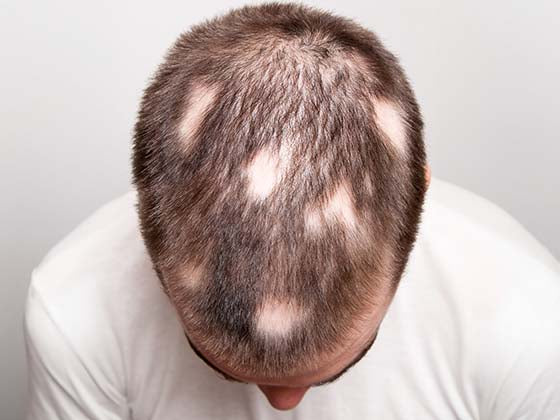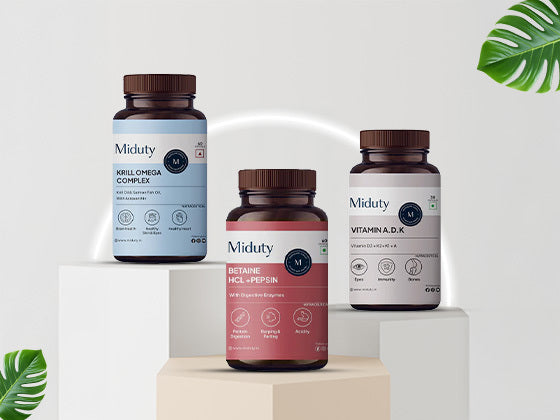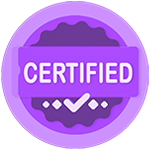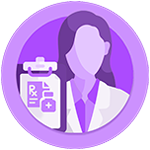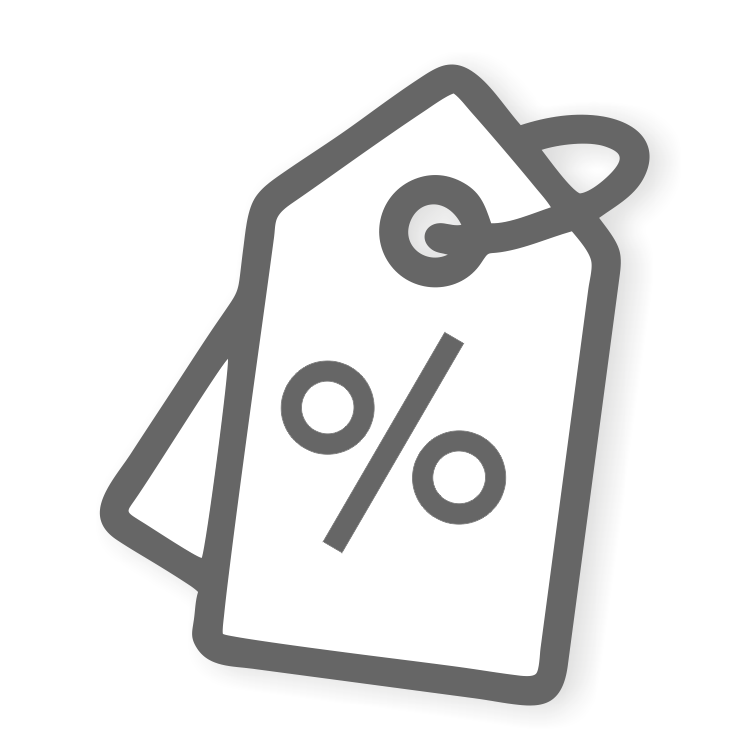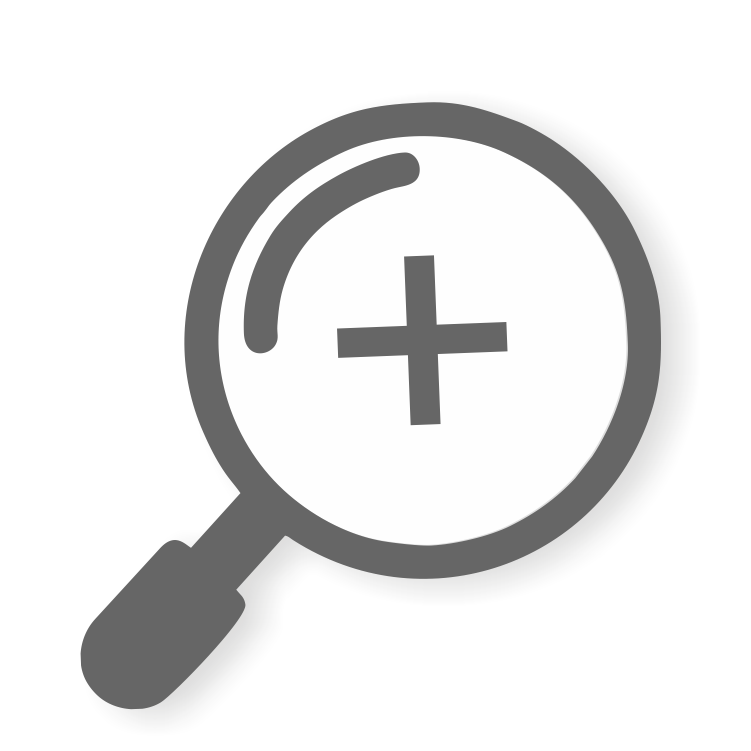- Common Triggers
- Associated Infections
- Symptoms & Various Types
- Underlying Health Concerns
- OTC Relief
- Prescription Care
- FAQs
Breast rashes are painful and uncomfortable, but the causes and treatments for them should be known in order to seek relief. Various factors can cause rashes on the breast, such as allergies, infections, hormonal changes, or skin irritation. Some of the rashes are mild and self-limiting, while others require medical care. Identifying the underlying cause of the rash is key to determining the most effective treatment, whether it's topical creams, oral medications, or simple self-care measures. In this guide, we'll explore the common causes of breast rashes and the available treatments to help manage symptoms, soothe irritation, and prevent recurrence. Knowing what to look for and when to seek professional help ensures you can take the right steps for your skin's health and well-being.
What Causes a Rash on the Breast? Common Triggers to Know

There are several causes of rashes on the breast, from mild irritation to serious underlying conditions. Diagnosis is an essential element in proper treatment. Here are some of the common triggers of a breast rash:
-
Allergic reactions due to skin creams, soaps, or laundry detergents.
-
Skin infections that include fungal and bacterial infections.
-
Heat rashes due to sweat, especially during hot weather or wearing tight clothes.
-
Eczema, bringing itchiness and inflammation to the skin
-
Contact dermatitis, which can result from irritation or an allergic response to substances that touch the skin
-
Inflammatory conditions of the skin, for instance psoriasis
-
Hormonal changes like those that occur in pregnancy or menstruation to cause a change on the skin
-
Autoimmune diseases like lupus, which may cause rashes on the skin
-
Side effect from breastfeeding such as nipple thrush or mastitis irritation
-
Medication or other medical treatments.
If you notice any unusual rash on your breast that doesn't improve with basic care or if it’s accompanied by pain, swelling, or other concerning symptoms, it’s important to seek medical advice for proper diagnosis and treatment. Identifying the cause early can help prevent complications and ensure effective management of the condition.
Allergies and Sensitivities: How They Contribute to Breast Rashes

Allergies and sensitivities can play a significant role in causing rashes on the breast. When the skin comes into contact with certain substances, the immune system may react by releasing chemicals that lead to inflammation and irritation. This can result in a rash, which can range from mild redness to severe swelling and itching. Understanding how allergies and sensitivities contribute to breast rashes can help in managing and preventing such reactions.
-
Allergic reactions to skincare products such as lotions, creams, or deodorants can cause a rash on the breast area. Ingredients like fragrances, preservatives, or dyes may irritate sensitive skin.
-
Laundry detergents or fabric softeners containing harsh chemicals or fragrances can trigger contact dermatitis. This often appears as red, itchy patches on the skin.
-
Certain fabrics or clothing materials, for example, wool and artificial fibers, cause irritation of the skin, giving off rashes at the breast area if they rub on the skin.
-
Hormonal activity can be heightened during pregnancy and menstruation periods, and this makes an individual sensitive to usual allergens, making the skin very prone to developing a rash especially in areas like the breast.
-
Food allergies, though less common, can sometimes manifest as skin rashes, including on the breast. Common allergens such as nuts, dairy, or certain fruits may cause a systemic allergic reaction that affects the skin.
-
In some cases, individuals with allergies to pollen, dust mites, or pet dander may experience skin flare-ups, including rashes, due to these airborne allergens.
-
Sensitivities to certain medications or antibiotics can cause skin reactions, including rashes on the breast, as a side effect of the drug.
-
Inflammatory skin conditions like eczema can be triggered or worsened by allergens, leading to persistent or recurring rashes on sensitive skin areas like the chest.
It’s important to carefully observe any potential triggers for breast rashes, as identifying the specific cause of an allergic reaction or sensitivity can be key to prevention. In cases where the rash persists or worsens, seeking medical advice is recommended to determine the best course of action for managing the condition and reducing future outbreaks.
Infections: Identifying the Role of Bacterial and Fungal Infections

Infections, particularly bacterial and fungal ones, can significantly contribute to the development of rashes on the breast. These infections often occur when harmful microorganisms invade the skin, causing inflammation, irritation, and discomfort. Recognizing the signs of bacterial and fungal infections is essential for proper treatment and to avoid further complications.
-
Bacterial infections, such as cellulitis, occur when bacteria, often staphylococci or streptococci, enter the skin through cuts or other breaks. These infections can cause swelling, redness, warmth, and pain on the breast, along with a rash that may blister or ooze.
-
It is a bacterial infection, more frequently seen in breastfeeding women, where, if the nipples are cracked or sore, bacteria will enter the tissue of the breast. This causes swelling, redness, fever, and pain, with a rash appearing on the affected portion of the breast.
-
Folliculitis is an infection of the hair follicles by bacteria. This can be located on the breast area. It manifests as small, red bumps or pustules and can be itchy or tender.
-
Fungal infections, such as Candida (yeast infections), can lead to rashes on the breast, especially in warm, moist areas. Fungal rashes may appear as red, itchy patches with a slightly raised border, often found under the breasts or in skin folds.
-
Tinea (ringworm), a fungal infection, can also cause rashes on the breast, presenting as circular, scaly, and itchy patches. Ringworm is highly contagious and can spread through skin-to-skin contact or shared items like towels.
-
Dermatophytes, a type of fungi, may thrive in the moist environment around the breasts, especially in individuals who are overweight or sweat excessively. This can cause a persistent rash that requires antifungal treatment.
-
In some cases, fungal infections may be secondary to bacterial infections, where the disrupted skin barrier provides an opportunity for fungal growth to occur alongside bacterial colonization.
Bacterial and fungal infections call for immediate medical attention to prevent further spread or complications. Any rash on the breast accompanied by pain, swelling, or discharge should be immediately seen by a doctor. The healthcare provider can diagnose the infection and provide proper antibiotics or antifungal medication for relief.
Hormonal Changes: A Common Culprit for Breast Skin Changes

Hormonal changes are significant factors that may cause rashes and other changes on the breast. These changes in hormones will change the sensitivity of the skin and alter how it responds to the environment. Knowing how hormonal shifts cause these skin conditions can help in the management and prevention of the resultant problems.
-
During pregnancy, the body undergoes significant hormonal changes that can lead to skin changes, including rashes on the breast. Increased estrogen levels can cause the skin to become more sensitive, which may result in rashes or itching, especially as the breast tissue grows.
-
Menstruation can also cause changes in the skin due to hormonal fluctuations, such as estrogen and progesterone. These changes can cause temporary skin reactions, such as rashes, acne, or sensitivity, including on the breast.
-
Hormonal imbalances may include PCOS, leading to issues like rashes and acne or irritation of the skin. It might affect even the breast area, where the skin reacts to increased levels of androgens or other hormones.
-
During menopause, the level of estrogen will fall, which makes the skin thin and easily irritated. It will make the breast skin sensitive and reactive to various irritants and may result in rashes or dryness, especially at the fold of the breasts.
-
Hormonal therapies, such as birth control pills or hormone replacement therapy (HRT), can also cause skin changes as they alter hormone levels. Some people may develop skin reactions like rashes, redness, or sensitivity on the breasts when using such treatments.
-
Hormonal changes associated with breastfeeding can cause changes to the skin as well. The increased blood flow and sensitivity in the breast tissue, along with frequent changes in hormones during nursing, can lead to irritations, rashes, or even infections like mastitis.
Hormonal changes are a common factor in many skin conditions, including those affecting the breast. If a rash or irritation persists or worsens, it is important to consult with a healthcare provider to understand the underlying cause and receive the appropriate treatment. Managing hormonal fluctuations through lifestyle changes or medical interventions can help reduce skin sensitivity and prevent recurrent skin issues.
Symptoms of a Breast Rash: How to Recognize Different Types

Recognizing the symptoms of a breast rash is essential for determining the cause and seeking appropriate treatment. Rashes on the breast can vary widely in appearance and severity, depending on the underlying cause. Understanding the different types of rashes and their symptoms can help identify the issue and guide you to the right course of action.
-
Redness and itching: Often due to allergies, contact dermatitis, among many other reasons, the common type of rashes. Skin redness often becomes warm or swollen, especially if itchy or burning.
-
Irritable patches: More of eczema, allergy reactions, and fungi. Some cause so much pain that constant scratching causes even more irritation on the skin.
-
Pimple-like bumps or blisters: These are generally associated with infections, either from bacteria, as in the case of folliculitis, or viruses, like shingles. They can be filled with liquid or pus, and they might be painful to the touch or sensitive.
-
Peeling or scaling: A rash that makes the skin flake or peel, which is commonly seen with fungal infections such as tinea (ringworm) or psoriasis. This may be accompanied by redness and may be tender or painful.
-
Dry, cracked skin: Commonly a sign of eczema or dermatitis. The skin over the breast can become excessively dry and crack, leading to bleeding or discomfort, especially where friction or moisture has built up.
-
Pustules or pimples: These may appear as small, pus-filled lesions and are commonly caused by bacterial infections or acne. The rash can cause pain and may have an associated odor, particularly in cases of infected skin.
-
Discoloration or bruising: A breast rash that causes purple or blue spots may be an indication of an underlying condition such as vasculitis, which is a form of inflammation of the blood vessels. This could be a more serious condition and should be evaluated by a healthcare provider.
-
Warmth and swelling: These symptoms are often associated with infections like mastitis or cellulitis. If the rash is accompanied by fever or chills, it could indicate a bacterial infection that requires medical treatment.
-
Lumps or bumps under the skin: If a rash is accompanied by hard lumps or swelling under the skin, it could indicate an abscess or deeper infection, such as an infected cyst or mastitis.
-
Patchy or ring-shaped appearance: Often seen in fungal infections like ringworm or eczema. These rashes can form circular patterns with a raised border, often appearing in the folds or under the breasts.
Recognizing the type of rash and its symptoms is essential in determining the right treatment approach. If the rash is persistent, worsening, or accompanied by other concerning symptoms like fever, pain, or swelling, it’s important to consult a healthcare provider. They can offer a proper diagnosis and recommend the best treatment to alleviate symptoms and prevent further complications.
Red, Itchy, and Inflamed: Signs of a Possible Skin Irritation

When you experience redness, itchiness, and inflammation on your breast skin, it might be a sign of skin irritation. These symptoms tend to appear whenever the skin comes into contact with substances or conditions that trigger an inflammatory response. Knowing what can cause these symptoms will help you address the issue properly and avoid its aggravation.
-
Contact dermatitis: This is a condition in which the skin reacts to a substance it comes into contact with, such as a new soap, lotion, or laundry detergent. It results in red, itchy, and inflamed patches of skin. This irritation may be localized or spread to surrounding areas of the breast, depending on the extent of contact.
-
Allergies: For example, when you react to synthetic fabric material, or an allergic reaction can be brought upon by a specific deodorant or foodstuffs, that causes redness, itching, and swelling on the skin, especially around your breast if the clothing fits really tight, causing friction or making you sweat frequently.
-
Heat rash: If you’ve been sweating excessively, especially in hot weather or during exercise, your skin may develop red, itchy, and inflamed patches, often in areas where sweat becomes trapped, such as under the breasts. Heat rash occurs when sweat ducts become blocked, leading to inflammation.
-
Chafing or friction: Ill-fitting clothing or rubbing bras can chafe against the skin. When this happens, redness and inflamed skin with an itchiness feeling is often accompanied by heat or moisture. The raw skin may turn into small abrasions if it persists.
-
Eczema, also known as atopic dermatitis, is a chronic condition that can make patches of the skin, such as the area over the breast, red, itchy, and inflamed. It is caused by various allergens, environmental factors, or stress. In many cases, it may require ongoing treatment to manage flare-ups.
-
Fungal infections: Conditions like Candida (yeast infections) or tinea (ringworm) can cause red, itchy, and inflamed patches of skin. Fungal infections thrive in warm, moist environments, such as under the breasts, and often result in irritation and discomfort.
-
Psoriasis: A chronic skin condition that causes the rapid buildup of skin cells, psoriasis can lead to red, inflamed patches, often covered by silvery scales. It may appear on the breasts and cause itching and irritation, especially during flare-ups.
If you experience persistent redness, itchiness, and inflammation on your breast, it's essential to identify the underlying cause. Avoid scratching or further irritating the affected area, as this can worsen the condition or lead to infection. If the irritation doesn't improve with basic self-care measures like avoiding known irritants or using soothing creams, it's a good idea to consult a healthcare provider for a proper diagnosis and treatment.
When a Rash Indicates a Health Concern: Understanding the Red Flags

A rash on the breast is at times harmless and may sometimes denote a more complicated health issue that needs to be addressed. Noting the warning signs that advise one to consult a professional would be essential so that one understands when a rash requires prompt attendance to avoid potential complications and allow proper treatment of the condition.
-
Persistent or worsening rash: If the rash doesn’t improve or gets worse over time, it could indicate an underlying infection, allergic reaction, or other health concern. Persistent rashes may require a healthcare provider's evaluation to rule out conditions like autoimmune disorders or chronic skin conditions.
-
Pain or tenderness: Rashes that cause significant pain, especially when touched, may point to a bacterial infection, such as mastitis or cellulitis. These conditions often require antibiotics or other treatments to prevent the infection from spreading or worsening.
-
Swelling and warmth: When the rash is accompanied by swelling, redness, and warmth in the affected area, it may be a sign of an infection or an inflammatory condition like breast abscesses or mastitis. These conditions need timely medical intervention to avoid complications.
-
Discharge or oozing: If the rash starts to ooze or produce discharge, especially pus or blood, it may indicate an infected wound, abscess, or severe bacterial infection. This warrants immediate medical attention to prevent further infection and promote healing.
-
The onset of fever or chills might be accompanied by a rash due to a possible bacterial or viral infection. Conditions such as mastitis or cellulitis, left untreated, are dangerous and might lead to complications such as septicemia.
-
Difficulty breathing or swelling in other areas: If the rash is accompanied by other systemic symptoms, such as difficulty breathing, swelling of the lips, tongue, or throat, this could indicate an allergic reaction, such as anaphylaxis. This is a medical emergency and requires immediate attention.
-
Rash with bruising or purple spots: A rash that causes bruising, purple spots, or unusual discoloration could be a sign of vasculitis, an inflammatory condition affecting blood vessels. This condition may require immediate medical intervention to address underlying causes, including autoimmune or blood clotting disorders.
-
Development of lumps or hard masses: If a rash is accompanied by lumps or hardened areas under the skin, it could indicate an abscess, cyst, or tumor. In such cases, it's important to seek medical advice to rule out any serious conditions, including breast cancer.
-
Unexplained changes in skin texture: If the rash leads to unusual changes in skin texture, such as thickening or scabbing, it may signal a more severe dermatologic condition that requires professional treatment, such as psoriasis or eczema.
While many rashes can be treated at home with proper care, any rash that presents with these red flags should not be ignored. Seeking medical attention promptly can help diagnose the underlying issue and ensure the appropriate treatment to prevent complications. If you're unsure whether your rash requires medical attention, it's always better to consult a healthcare provider to ensure your health is properly managed.
Differentiating Between Simple Rashes and Serious Conditions

Differentiating between simple rashes and more serious conditions is crucial for ensuring timely and appropriate treatment. While many rashes are benign and can be treated with home remedies, others may indicate underlying health issues that require immediate medical attention. Knowing how to distinguish between these can help prevent unnecessary worry while also ensuring serious conditions are not overlooked.
-
Appearance and progression: Simple rashes often have a clear and predictable appearance, such as small, raised bumps or mild redness, and they may gradually fade or improve with basic care. Serious conditions, however, may cause the rash to evolve rapidly, with more intense symptoms like swelling, blistering, or spreading across the body. Tracking how the rash develops can help identify its severity.
-
Associated symptoms: A simple rash is typically localized to one area of the body and may be accompanied by mild symptoms, like itching or slight discomfort. More serious conditions often have additional systemic symptoms, such as fever, fatigue, joint pain, or difficulty breathing. If the rash is accompanied by symptoms beyond the skin, it’s a sign that it could be more than a minor irritation.
-
Pain and discomfort: Simple rashes might cause mild itching or tenderness, but if a rash is extremely painful, causes throbbing, or is excessively warm to the touch, it could indicate an infection or other serious condition, such as cellulitis or mastitis, which require medical intervention.
-
Duration: Rashes caused by allergies, mild irritants, or heat usually improve within a few days with basic care. A rash that lasts for weeks or longer, or one that keeps returning, may be a sign of an underlying condition such as eczema, psoriasis, or an autoimmune disorder, which need more specialized treatment.
-
Color and texture: A simple rash typically shows uniform redness or small bumps, while more serious rashes may present with unusual color changes, such as purple, blue, or brown spots, or have an unusual texture, such as thickened skin or scales. If the rash is associated with significant changes in skin texture, it may be a sign of a more serious condition like lupus or vasculitis.
-
Reaction to treatment: The rash should topically respond if it reacts well to over-the-counter creams, antihistamines, or other basic treatments. On the other hand, if the rash develops complications with treatment, or if it does not change, this could be a serious health problem, such as an infection or autoimmune disease, which must be taken to the clinic.
-
Location and distribution: Simple rashes are often isolated to a specific area, such as under the breasts or on the arms, and may be caused by external irritants like clothing or products. In contrast, more serious conditions like systemic infections, viral rashes, or autoimmune diseases can cause rashes to appear in multiple locations or in patterns that seem unusual, such as in a butterfly shape on the face for lupus.
To differentiate between the two:
-
Observe the symptoms: Track any additional symptoms such as fever, chills, or body aches. If a rash is accompanied by systemic signs, it is more likely to be serious.
-
Assess pain level: If the rash is painful, particularly if the pain worsens or is severe, it's worth seeking medical advice.
-
Monitor progression: A rash that spreads rapidly or does not improve within a few days may indicate a more serious condition.
-
Consider recent exposure: Think about potential allergens, medications, or environmental factors that might have triggered the rash. If you cannot identify a cause or the rash worsens despite removing possible triggers, medical attention is needed.
-
Seek professional help when in doubt: If you're unsure whether a rash is simple or serious, it’s always better to consult with a healthcare provider. Early diagnosis and treatment can help prevent complications, especially when dealing with conditions like infections or autoimmune diseases.
Treatment Options for Breast Rashes: Finding Relief and Care

The proper treatment of breast rashes is necessary to treat the symptoms and prevent further complications. Using the right treatment will target the infection, allergic reaction, or irritation, and incorrect treatments can make the condition worse or even cause more discomfort. Identifying the cause and selecting an appropriate remedy—whether over-the-counter, prescription medication, or self-care—can help promote healing, reduce discomfort, and avoid recurring issues. Proper treatment also minimizes the risk of developing more severe conditions, ensuring long-term skin health.
Over-the-Counter Solutions for Mild Rashes

For mild rashes, over-the-counter (OTC) treatments can often provide effective relief. These solutions are typically readily available and can help reduce symptoms like redness, itching, and irritation. However, if the rash persists or worsens, seeking medical advice is recommended. Below are some common OTC treatments for mild rashes:
-
Hydrocortisone Cream (1%): This mild corticosteroid is widely used to reduce inflammation, redness, and itching caused by conditions like contact dermatitis, eczema, or mild allergic reactions. It's available in various forms, such as creams, ointments, and lotions.
-
Calamine Lotion: This soothing lotion is effective for rashes caused by poison ivy, poison oak, or insect bites. It helps to dry out weeping blisters and relieve itching.
-
Antihistamine Tablets (e.g., Benadryl): Oral antihistamines like diphenhydramine (Benadryl) can help reduce itching and swelling caused by allergic reactions or mild skin irritations. They work by blocking histamines, which are responsible for allergic symptoms.
-
Antihistamine Creams (e.g., Benadryl Cream): For localized itching, topical antihistamine creams can be applied directly to the rash to alleviate discomfort and reduce the allergic reaction.
-
Aloe Vera Gel: Aloe vera is known for its soothing properties. It can help cool the skin and reduce redness or irritation caused by mild burns, sunburns, or mild allergic reactions.
-
Colloidal Oatmeal: This natural ingredient is commonly found in bath products or topical creams. It has anti-inflammatory properties and can relieve itching and dryness from conditions like eczema, poison ivy, or allergic rashes. Adding colloidal oatmeal to a bath or applying a cream containing it can provide significant relief.
-
Zinc Oxide Cream: Often used for diaper rashes, zinc oxide can also help treat minor skin irritations and rashes by forming a protective barrier on the skin. It’s particularly useful for soothing and protecting irritated skin.
-
Calamine or Zinc-based Creams: These are great for reducing itching and discomfort from mild rashes, especially those caused by insect bites or poison ivy.
-
Topical Antifungal Creams (e.g., Lotrimin, Lamisil): For mild fungal infections like athlete’s foot or ringworm, OTC antifungal creams can help relieve symptoms, reduce itching, and clear the infection.
-
Moisturizers (Fragrance-Free): Non-scented, hypoallergenic moisturizers like Cetaphil or Eucerin are effective in treating dry, flaky rashes caused by eczema or other skin conditions. These help to hydrate the skin and maintain its barrier function.
-
Witch Hazel: Witch hazel is a natural astringent that can help relieve itching and reduce inflammation. It’s particularly useful for soothing rashes from mild insect bites, allergic reactions, or heat rash.
-
Sodium Bicarbonate (Baking Soda): A paste made from baking soda and water can be applied to the rash to help soothe itching and inflammation. It’s particularly useful for mild poison ivy rashes or insect stings.
-
Tea Tree Oil: Known for its antiseptic and anti-inflammatory properties, tea tree oil can be used in small amounts to soothe mild rashes, particularly those caused by fungal infections, like athlete’s foot or ringworm. However, it should be diluted with a carrier oil to avoid irritation.
These OTC solutions can provide temporary relief from mild rashes. For the best results, make sure to follow the directions carefully, avoid irritating the affected area further, and consult a healthcare provider if the rash does not improve, worsens, or is accompanied by other concerning symptoms.
Prescription Medications for Severe Skin Conditions

For more severe skin conditions that don’t respond to over-the-counter treatments, prescription medications may be necessary to provide relief and manage symptoms. These medications are typically stronger and tailored to address the underlying cause of the rash or skin issue. Below are some common prescription medications used to treat severe skin conditions:
-
Topical Corticosteroids: For severe inflammation, prescription-strength corticosteroid creams or ointments, such as triamcinolone or betamethasone, may be prescribed. These are used to treat conditions like eczema, psoriasis, or allergic dermatitis by reducing redness, swelling, and irritation. Stronger corticosteroids may be required for more severe flare-ups.
-
Oral Corticosteroids (e.g., Prednisone): For widespread inflammation or severe allergic reactions, oral corticosteroids like prednisone may be prescribed. These are taken in pill form and help reduce systemic inflammation. They are typically prescribed for a short period due to potential side effects from long-term use.
-
Topical Calcineurin Inhibitors (e.g., Tacrolimus, Pimecrolimus): These non-steroidal medications are used to treat severe eczema or atopic dermatitis by inhibiting the immune system’s response that causes skin inflammation. They are particularly useful for areas that may be sensitive to steroids, such as the face or genital region.
-
Topical Retinoids (e.g., Tretinoin): For severe acne or psoriasis, prescription retinoid creams can help speed up skin cell turnover and reduce the buildup of dead skin cells. Tretinoin, for example, is commonly prescribed to treat acne, and it helps to keep pores clear, preventing future breakouts.
-
Oral Antibiotics (e.g., Doxycycline, Minocycline): When bacterial infections cause rashes, oral antibiotics may be prescribed to treat conditions like cellulitis, folliculitis, or infected eczema. These help clear up the infection and reduce inflammation in the affected area.
-
Oral Antifungal Medications (e.g., Fluconazole, Itraconazole): For more severe fungal infections, such as ringworm or candidiasis, oral antifungal medications may be required. These medications help treat systemic or extensive fungal infections that do not respond to topical treatments.
-
Immunosuppressants (e.g., Methotrexate, Azathioprine): In cases of severe autoimmune skin conditions like psoriasis or lupus, immunosuppressants may be prescribed to reduce the activity of the immune system, preventing it from attacking healthy skin cells. These medications are often used when other treatments are ineffective.
-
Biologic Medications (e.g., Humira, Enbrel, Stelara): Biologic therapies are often prescribed for severe autoimmune skin conditions, such as moderate to severe psoriasis. These drugs work by targeting specific parts of the immune system to prevent inflammatory responses that cause skin damage.
-
Oral Antihistamines (e.g., Hydroxyzine, Cetirizine): For severe allergic reactions or conditions like chronic urticaria (hives), stronger oral antihistamines may be prescribed to control itching and reduce histamine release, helping to alleviate symptoms of allergic rashes.
-
Phototherapy (UVB Therapy): In severe cases of psoriasis or eczema that do not respond to topical treatments, ultraviolet B (UVB) light therapy may be used. This involves controlled exposure to UV light to reduce inflammation and skin cell turnover, helping to clear the rash.
-
Topical Antibacterial Creams (e.g., Mupirocin): In cases of localized bacterial infections, a stronger antibiotic cream may be prescribed to treat rashes caused by infections like impetigo, folliculitis, or infected eczema. Mupirocin is commonly used for treating such skin infections.
Prescription medications are typically prescribed after a healthcare provider evaluates the severity and underlying cause of the skin condition. It is important to follow your healthcare provider's instructions carefully, as many prescription treatments have potential side effects or require long-term management. If you notice any adverse reactions or the condition doesn't improve, be sure to consult with your provider for further adjustments in treatment.
Self-Care Tips to Soothe and Prevent Breast Rashes

Managing and preventing breast rashes often involves simple self-care measures that can help soothe irritation, reduce inflammation, and promote healing. Here are some helpful tips to relieve discomfort and avoid future outbreaks:
-
Keep the area clean and dry: Moisture and sweat can irritate rashes, especially in areas such as under the breasts. Gently wash the affected area with lukewarm water and a mild, fragrance-free soap, then pat it dry with a soft towel. Avoid rubbing, as this can irritate the skin further.
-
Wear loose, airy clothing: Tight clothing, especially bras or synthetic fabrics, traps sweat and causes friction, making a rash worse. Wear loose-fitting, airy cotton, which allows your skin to breathe and reduces irritation.
-
Use a gentle, fragrance-free moisturizer: Dry skin can make rashes worse. Apply a hypoallergenic, fragrance-free moisturizer after cleaning the area to help keep the skin hydrated. This is especially helpful for conditions like eczema or dryness-related rashes.
-
Avoid harsh skin products: Be cautious of skincare products that contain alcohol, fragrances, or other irritating ingredients. Switch to gentle, non-comedogenic products to avoid aggravating the skin. Choose products designed for sensitive skin to reduce the risk of irritation.
-
Apply cold compresses: For rashes that cause itching or discomfort, apply a cool compress or ice pack wrapped in a soft cloth to the affected area. This can help reduce inflammation, soothe itching, and provide temporary relief.
-
Wear a comfortable, supportive bra: If you're experiencing a rash under the breast, ensure that your bra fits properly and does not rub against your skin. Look for bras made of soft, moisture-wicking fabrics to minimize irritation. Avoid underwires if they cause pressure on sensitive areas.
-
Use cornstarch or baby powder: To keep the area dry and prevent sweating, apply cornstarch or unscented baby powder under your breasts. These can help absorb excess moisture and prevent chafing, particularly in warm weather.
-
Practice good hygiene: Shower regularly, especially after sweating, to remove bacteria and prevent infections. Change out of sweaty clothes promptly, and make sure to clean areas that are prone to moisture, like under the breasts.
-
Avoid scratching: As tempting as it may be, scratching a rash can make it worse by causing further irritation, breaking the skin, or leading to infection. If itching is a problem, try applying an anti-itch cream, calamine lotion, or antihistamine cream instead.
-
Use over-the-counter treatments: For mild rashes, over-the-counter creams, such as hydrocortisone or antifungal ointments, can provide relief. These are particularly useful for allergic reactions, mild infections, or fungal rashes like yeast infections.
-
Monitor for triggers: Keep track of any potential triggers that may cause or worsen rashes, such as certain fabrics, skincare products, or food allergies. Identifying and avoiding these irritants can help prevent future flare-ups.
-
Stay hydrated: Drink plenty of water to keep your skin hydrated from the inside out. Proper hydration helps maintain healthy skin and can aid in the healing process for rashes.
-
Limit sun exposure: Excessive sun exposure can irritate rashes or cause sunburn, making the skin more sensitive. If you must be in the sun, use a broad-spectrum sunscreen and wear protective clothing to shield your skin.
By adopting these self-care practices, you can soothe existing rashes and reduce the likelihood of future outbreaks. However, if the rash persists, worsens, or is accompanied by other concerning symptoms, it's important to seek medical advice for proper diagnosis and treatment.
When to Seek Professional Help: Knowing When to Consult a Doctor

Understanding the appropriate time for seeking professional treatment for a rash on the breasts is very fundamental in ensuring one gets proper medical treatment and eliminates the possibility of complications. Over-the-counter drugs will not alleviate a rash which continues to expand or worsens with time since it might result from an infection that needs intervention. Rashes that are accompanied by symptoms such as fever, pain, swelling, or discharge could indicate an infection that requires antibiotics or other specific treatments. Additionally, if the rash is persistent, recurring, or associated with other symptoms like difficulty breathing or swelling, consulting a healthcare provider is important to rule out more serious conditions, such as autoimmune diseases or allergic reactions. A doctor can provide an accurate diagnosis, recommend appropriate treatments, and help prevent long-term skin damage. Early consultation ensures effective care and offers peace of mind, promoting both recovery and the prevention of future flare-ups.


